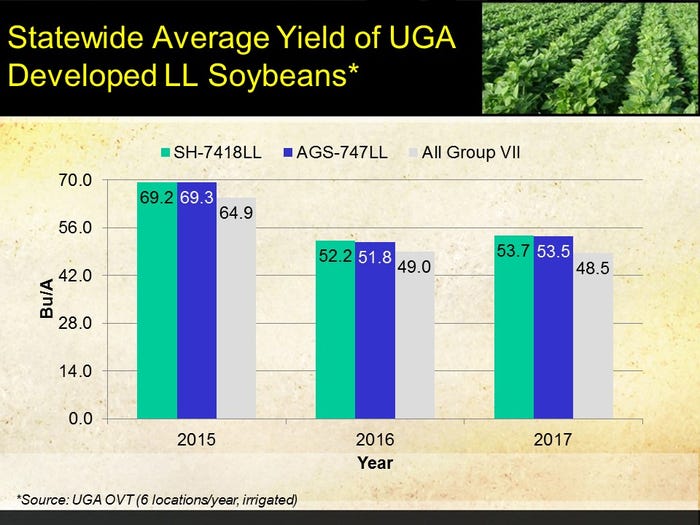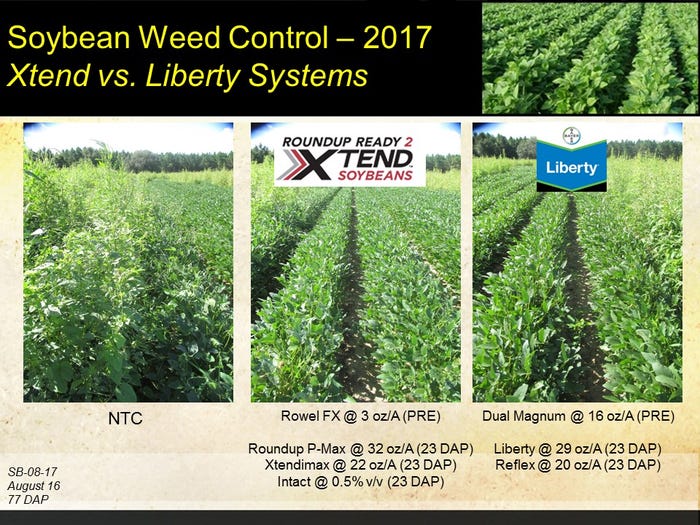March 13, 2018

Revolutionary War figure Patrick Henry in 1775 famously uttered, “Give me Liberty or give me death!” I’m pretty confident Ol’ Pat wasn’t a glufosinate salesman, but I appreciate the catchy lead to this column.
I recently finished my annual tour of duty delivering the weed science gospel around the state of Georgia. I must have heard the word dicamba a million times or more during the 40-pluse grower meetings I headlined. (Dr. Stanley Culpepper was my opening act.) The consensus around the state was that the dicamba weed control programs in tolerant cotton and soybean worked better than expected. But off-target issues have many people concerned about the future of the technology?
This coupled with the ever-increasing problem of PPO resistance could point some sprayers in the direction of LibertyLink weed control systems. Since I am the soybean weed guy in Georgia, I will focus on that topic herein.
The first commercial sales of LibertyLink soybeans occurred somewhere around the year 2009. Since that time, it has been a slightly uphill battle competing against Roundup-Ready and glyphosate. In those early days, the yield potential of LibertyLink soybeans was not quite up to par. But, over the last few years much effort has been put into genetics, and the yield performance of LibertyLink soybeans has been improving. Bayer CropScience, Pioneer and many other seed companies have invested buckets of money developing LibertyLink soybeans for southeastern growers.
Additionally, the University of Georgia soybean breeding program, under the direction of Dr. Zenglu Li, recently licensed 2 Group VII LibertyLink soybean cultivars that will be sold under the names of AGS-747LL (AGSouth) and SH-7418LL (Meherrin). Both cultivars have performed better than average over the last three years in statewide UGA OVT’s (Figure 1). In case you are interested, these varieties were tested under the following experimental numbers: G13LL-7 and G13LL-44.
What about weed control performance? It has been my experience that the LibertyLink weed control system is equally as effective as any other soybean weed control system (Figure 2). LibertyLink soybean growers must also continue to start clean, use residuals, and make timely postemergence applications. No shortcuts here!
Furthermore, Liberty (glufosinate) must be applied using pressure + nozzle systems that deliver medium size droplets (~236-340 microns) and in good sunlight (~1.5 hours after sunrise or 1 hour before sunset). Other formulations of glufosinate floating around include Cheetah (NuFarm), Forfeit 280 (Loveland), Interline (UPI), and Reckon 280 (Solera). Check those labels before application.
The potential loss of the dicamba technologies if stewardship does not significantly improve and the looming threat of PPO-resistance in the Southeast should cause growers to consider all available weed control options. LibertyLink soybean weed control programs must continue to be part of that discussion. Didn’t our kindergarten teachers tell us when we were young to not put all our eggs in one basket?
As always, good weed hunting.


About the Author(s)
You May Also Like






